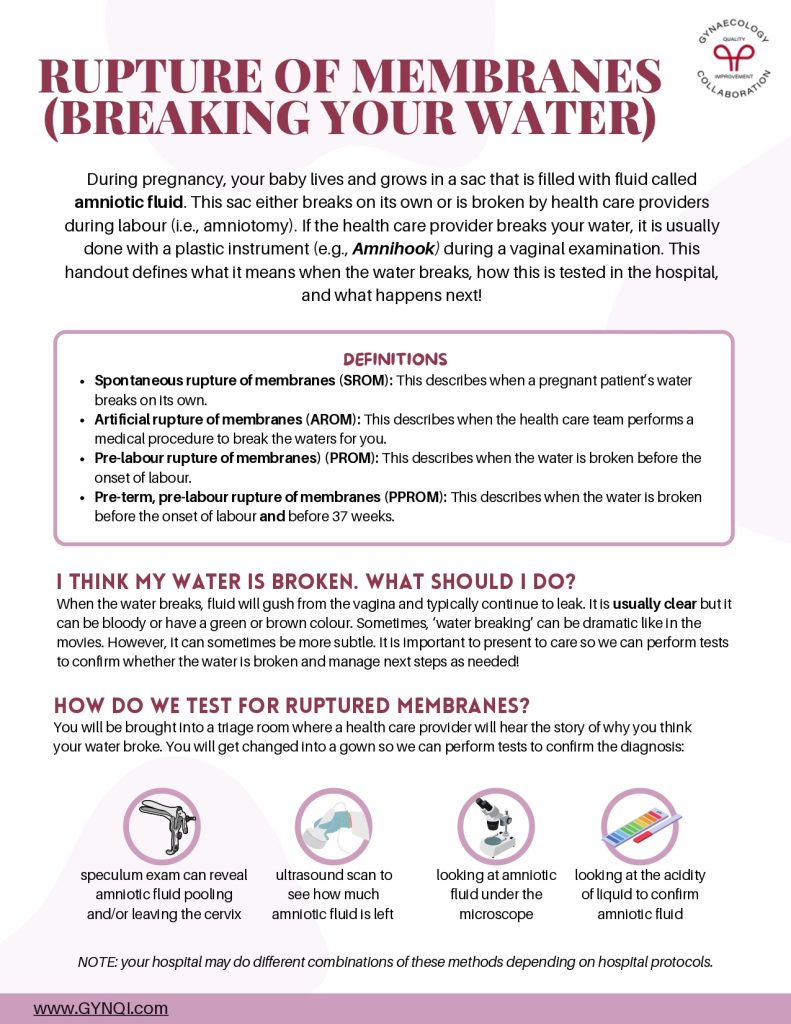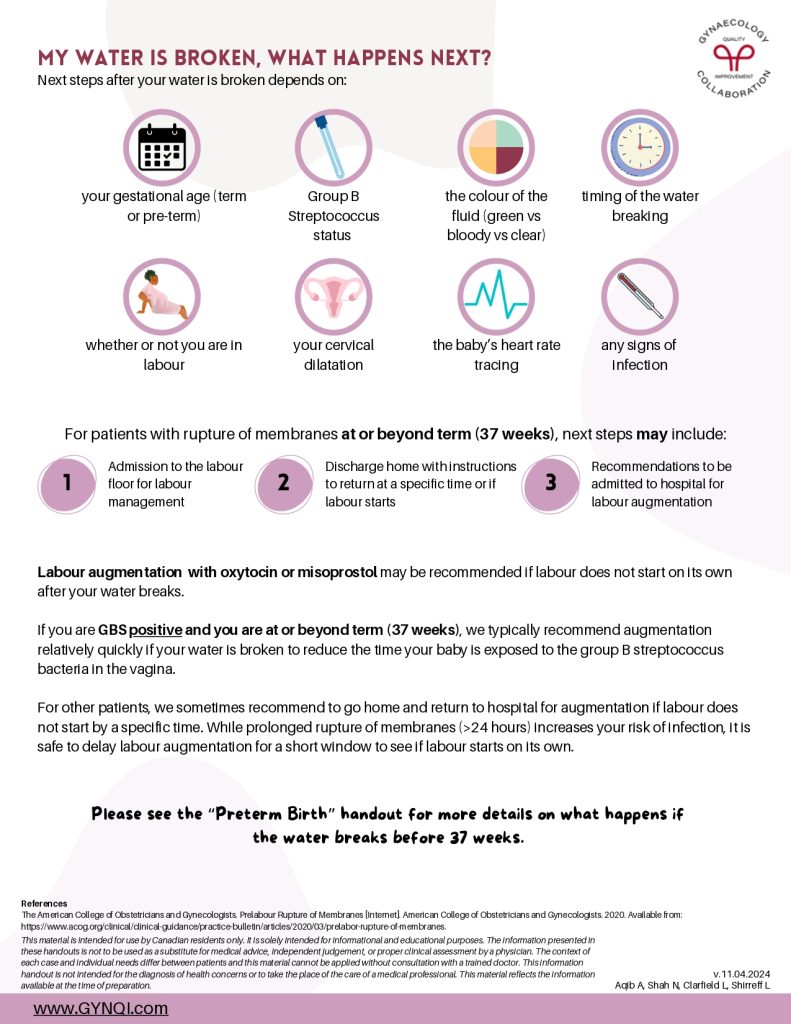
Rupture Of Membranes (Breaking Your Water)
During pregnancy, your baby lives and grows in a sac that is filled with fluid called amniotic fluid. This sac either breaks on its own or is broken by health care providers during labour (i.e., amniotomy). If the health care provider breaks your water, it is usually done with a plastic instrument (e.g., Amnihook) during a vaginal examination. This handout defines what it means when the water breaks, how this is tested in the hospital, and what happens next!
Definitions
- Spontaneous rupture of membranes (SROM): This describes when a pregnant patient’s water breaks on its own.
- Artificial rupture of membranes (AROM): This describes when the health care team performs a medical procedure to break the waters for you.
- Pre-labour rupture of membranes (PROM): This describes when the water is broken before the onset of labour.
- Pre-term, pre-labour rupture of membranes (PPROM): This describes when the water is broken before the onset of labour and before 37 weeks.
I Think My Water Is Broken. What Should I Do?
When the water breaks, fluid will gush from the vagina and typically continue to leak. It is usually clear but it can be bloody or have a green or brown colour. Sometimes, ‘water breaking’ can be dramatic like in the movies. However, it can sometimes be more subtle. It is important to present to care so we can perform tests to confirm whether the water is broken and manage next steps as needed!
How Do We Test For Ruptured Membranes?
You will be brought into a triage room where a health care provider will hear the story of why you think your water broke. You will get changed into a gown so we can perform tests to confirm the diagnosis:
- speculum exam can reveal amniotic fluid pooling and/or leaving the cervix
- ultrasound scan to see how much amniotic fluid is left
- looking at amniotic fluid under the microscope
- looking at the acidity of liquid to confirm amniotic fluid
NOTE: your hospital may do different combinations of these methods depending on hospital protocols.
My Water Is Broken, What Happens Next?
Next steps after your water is broken depends on:
- Your gestational age (term or pre-term)
- Group B Streptococcus status
- The colour of the fluid (green vs bloody vs clear)
- Timing of the water breaking
- Whether or not you are in labour
- Your cervical dilatation
- The baby’s heart rate tracing
- Any signs of infection
For patients with rupture of membranes at or beyond term (37 weeks), next steps may include:
- Admission ot the labour floor for labour management
- Discharge home with instructions to return at a specific time or if labour starts
- Recommendations to be admitted to hospital for labour augmentation
Labour augmentation with oxytocin or misoprostol may be recommended if labour does not start on its own after your water breaks.
If you are GBS positive and you are at or beyond term (37 weeks), we typically recommend augmentation relatively quickly if your water is broken to reduce the time your baby is exposed to the group B streptococcus bacteria in the vagina.
For other patients, we sometimes recommend to go home and return to hospital for augmentation if labour does not start by a specific time. While prolonged rupture of membranes (>24 hours) increases your risk of infection, it is safe to delay labour augmentation for a short window to see if labour starts on its own.
Please see the “Preterm Birth” handout for more details on what happens if the water breaks before 37 weeks.




